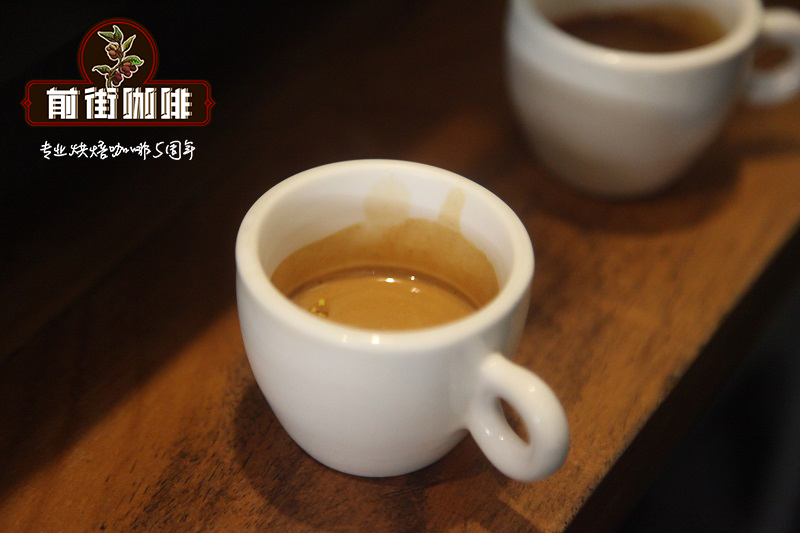The Development of automatic Coffee Vending Machine in China what brand of automatic coffee machine is good

Professional coffee knowledge exchange more coffee bean information please follow the coffee workshop (Wechat official account cafe_style)
Foreign brands such as Starbucks and costa have gradually cultivated Chinese interest and dependence on coffee in more than a decade. However, traditional cafes have many problems, such as heavy asset structure, large upfront investment, high operating costs, long profit cycle and so on, which are not in line with the preference of VC. Only a few traditional coffee shop brands (such as Dior Coffee, Cross-Strait Coffee, etc.) have been invested.
On the contrary, in the field of grinding coffee, automatic coffee vending machines have gradually entered office buildings, university dormitories and other public places, and gradually began to get the attention of capital. At present, the existing brands of automatic coffee vending machines in China include Coffee Zero Bar, Coffee Wharf, Coffee, Grinding Donkey, friendly drink, friendly Coffee, and so on. Here are some publicly reported projects that have been financed:
Project financing of automatic coffee vending machine
At present, these projects are still in the early stage. Under the background that traditional instant coffee is gradually out of favor, can grinder automatic coffee vending machines blossom everywhere and what is the market concentration? We explore the matter in different dimensions, and by solving these two problems, we can answer whether the field is worth investing in.
one. Market scale
Let's first take a look at the development of automatic coffee vending machines in developed countries:
Japan
Related data of Japanese beverage vending machine
According to the data given by the Japan Vending Machine Industry Association, by the end of 2015, the number of vending machines in Japan had reached 5 million, of which 2548700 were beverage vending machines, accounting for 51 percent, while the number of coffee vending machines (coffee & cocoa, cup type) reached 174000, accounting for about 3.5%. Based on the Japanese population of 127.3 million, there is one automatic coffee vending machine for every 7316 people.
America
Related data of American Beverage Vending Machine
According to the data given by vending news magazine, as of 2013, there were 267000 automatic coffee and beverage vending machines in the United States, accounting for 4.1% of the total. Among them, there are 246000 hot drinks and 21000 cold drinks. For every 1185 people in the United States, there is an automatic coffee and beverage vending machine for every 316.5 million people (2013).
According to the year-on-year point of view, the volume of coffee selling machines in the United States and Japan has been relatively stable, and there has been a slight decline, which can be used as a long-term benchmark.
According to the proportion of American vending machines (VEM) and convenience stores estimated at 30:1, there are about 90,000 chain convenience stores in China (data from China chain Management Association), and the number of domestic vending machines should be 2.7 million. According to the fact that coffee and beverages account for 3.5% of vending machines, 4% of coffee and beverages account for 4% of vending machines, there should be 100000 coffee and beverages in China. If the proportion of VEM/ convenience stores in Japan (75:1), there should be about 200000. On the premise of this assumption, with reference to the sales of 71.6 yuan in Japan and 15.7 billion yuan in the United States, the market size of Chinese coffee and beverages in vending machines should be about 10 billion.
However, according to the ratio of 40 people / Taiwan in the United States and 23 people / Taiwan in Japan, China's 4500 people / Taiwan is still in a state of low saturation, and the future development is still uncertain.
Let's estimate the market on the demand side:
Compared with instant and canned coffee, the quality of freshly ground coffee sold by automatic coffee vending machines is relatively better; compared with traditional cafes, automatic coffee vending machines save queuing time and are relatively efficient. The more value of traditional cafes lies in the "second leisure place", which meets people's leisure and social needs, while the automatic coffee vending machine meets that part of the pure desire for coffee, directly targeting the takeout market, which accounts for 35% of Starbucks' sales.
Compared to coffee shops, coffee vending machines have the following advantages:
Convenient and efficient
Traditional coffee shop coffee time: order 1 minute + make coffee 45s + queue time. Vending machines take JVS APEX in Japan as an example, where the time to make a coffee drink is about between 10s--30s, plus ordering time and potential queuing time, which is more convenient than traditional coffee shops. In addition, traditional cafes have a limited range of radiation and cannot be laid out to every office building. The automatic coffee vending machine is small and can be placed in any space where it is needed.
Product standardization
Traditional cafes rely on the mode of manual + machine to complete the production of a cup of coffee, although consumables and proportions have fixed standards, but manual operation still can not ensure the quality. The coffee made by the automatic coffee machine, every link is completed by the machine, the product level is very stable.
User independent personalized customization
The automatic coffee vending machine can use the user's DIY mode. Users can set the ice degree, sweetness and cup shape of the drink according to their own needs, and the process of DIY can enhance the fun of consumption to a certain extent.
Flexible business model (proprietary, sales or leasing)
As a standard with less manual participation, the automatic coffee vending machine can join individuals without reducing the level of management. The existing domestic automatic coffee vending machine manufacturers also adopt the business model of leasing + buyout + self-management. The flexible business model breaks the limitations of traditional cafes in terms of expansion.
Low cost and large profit margin
The main costs of cafes are coffee raw materials, venue rent and manpower. The automatic coffee vending machine usually covers an area of less than 1 square meter, saving a lot of land rent costs. In addition to the labor maintenance costs of the coffee machine, the form of self-order and payment by users also saves the main labor costs. Industry data show that the cost of an automatic coffee vending machine ranges from 1.5 to 30,000 yuan.
As a result, the automatic coffee vending machine can take away part of the market where coffee shops and freshly ground consumption are consumed.
It is reported that the sales volume of Chinese chain coffee shops in 2015 was 27 billion yuan (of which Starbucks accounted for 12.23 billion yuan, or about 45%), including about 60 billion non-chain coffee shops. The market for take-out coffee vending machines (600-35% = 21 billion) + grinding (100% 10% = 1 billion) has a total of 22 billion, which should be reduced in view of the non-substitutability of the two.
From the above two analysis dimensions, the current target market scale of Chinese automatic coffee vending machine is 10 billion +.
In the long run, the potential consumption of freshly ground coffee in China will be about 200 million. If the development reaches the expected level, the annual demand for 30 cups of coffee sold by automatic coffee vending machines per person per year will be 6 billion cups a year, with a unit price of RMB 8MUR and a market size of more than 50 billion yuan.
In addition to the increment of the coffee demand market itself, the increasing land rent and labor costs are also further expanding the development space of vending machines as a retail form in China. With reference to the proportion of automatic coffee vending machines in developed countries and the number of coffee vending machines per capita, the number of domestic automatic coffee vending machines may reach 100000 in the future.
At present, there are less than 200000 of all automatic coffee vending machines in China, far from reaching saturation.
Important Notice :
前街咖啡 FrontStreet Coffee has moved to new addredd:
FrontStreet Coffee Address: 315,Donghua East Road,GuangZhou
Tel:020 38364473
- Prev

Automatic coffee machine brand vending machine how much is the automatic coffee machine what are the characteristics of the coffee machine
Professional coffee knowledge exchange more coffee bean information Please follow the coffee workshop (Wechat official account cafe_style) with the continuous improvement of living standards, I believe everyone will like to drink coffee in life. If you want to have a cup of coffee when you go out, it will be a little inconvenient. But now many places have self-selling coffee.
- Next

Where can I find the after-sale maintenance of saeco coffee machine? Basic maintenance knowledge of household coffee machine
Professional coffee knowledge exchange more coffee bean information please follow the coffee workshop (Wechat official account cafe_style) about the maintenance cycle of the coffee machine, if the water quality is fine, it should be maintained once every two or three years, but if the coffee machine is running 24 hours a day and the operator is too busy to take good care of the coffee machine, it seems that the maintenance schedule should be adjusted slightly.
Related
- What is the Philharmonic pressure? How to use Philharmonic pressure to make delicious coffee
- Why does a hand grinder have more fine powder than an electric grinder?
- In addition to the hot mom, what is the difference between the versions of EK43 | ditting and Mahdi ek43?
- What kind of equipment do you need to make coffee by hand? Introduction to novice starter cooking equipment tools
- Espresso needs to be ground how thick and thin scale entry Italian Coffee Machine Bean Grinder investigation and Grinding course
- How much does it cost to open a small private cafe? How much does it cost to learn coffee? How to operate it?
- The difference between the flavor characteristics of hand-brewed coffee and coffee maker is hand-brewed coffee really better than coffee maker? Can I use a coffee machine to make coffee beans by hand?
- The difference between 01 and 02 of hario v60 filter cup what is the difference between 01 and 02 filter cup opening and cooking flavor
- What's the difference between the smart cup and the French kettle? Which is better, the French kettle or the Smart Cup?
- What's the difference between a smart cup and a V60 filter cup? The difference between the taste of smart cup and hand-brewed coffee

